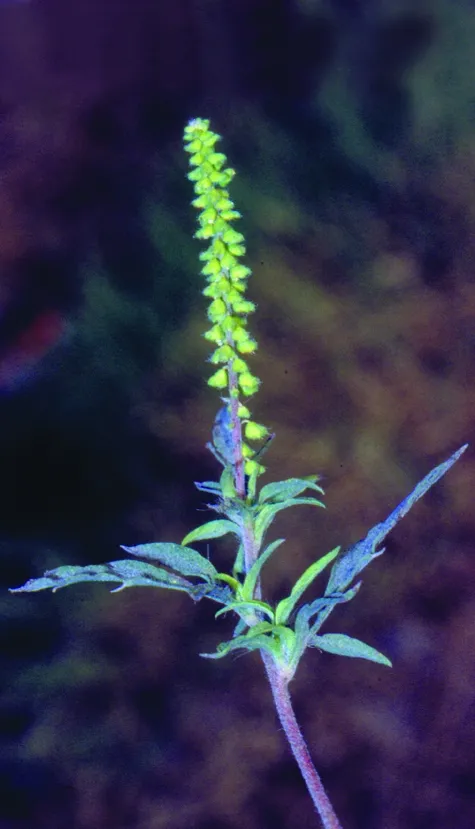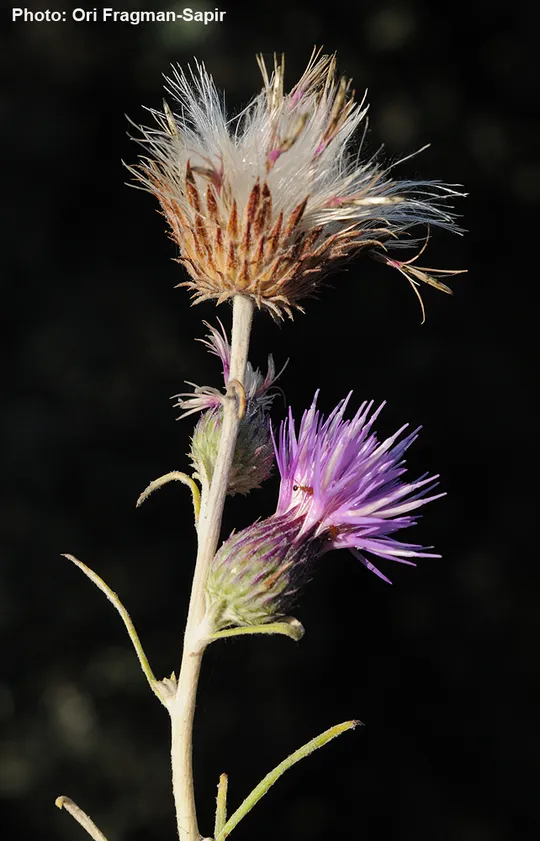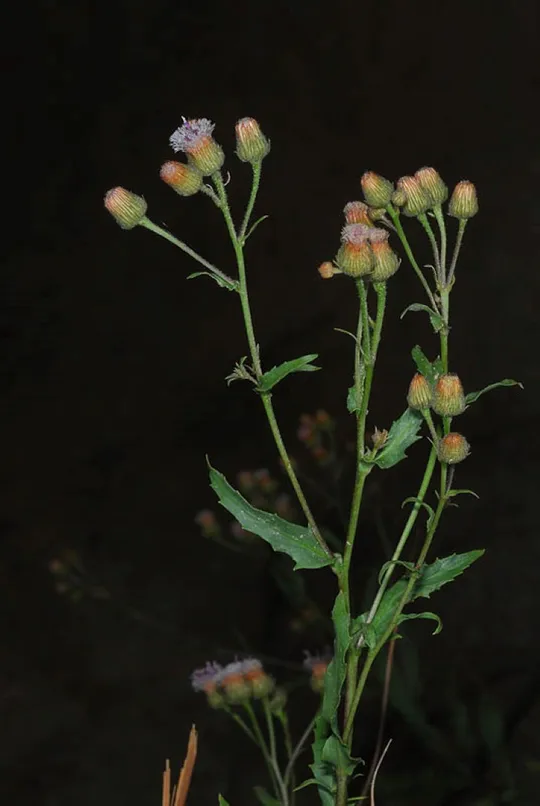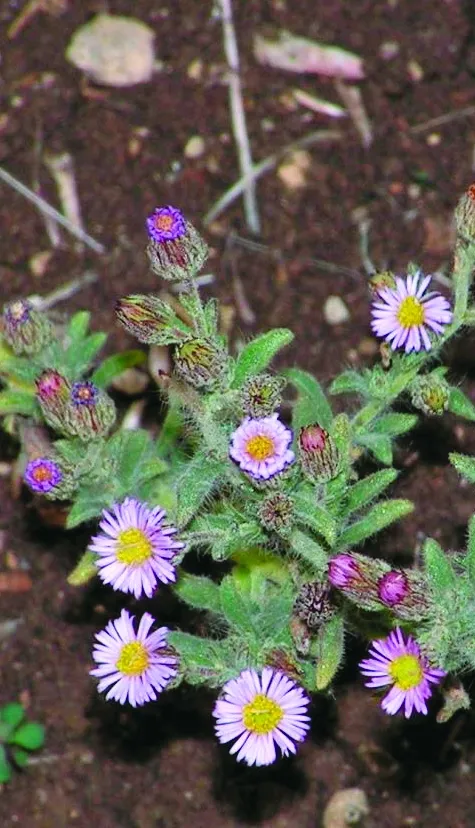Three-lobe Beggar-ticks, Three-part Beggar-ticks
Bidens tripartita
Bidens tripartita
is known from only one region, the
Hula Valley, where stable local populations were
found. Formerly it grew in the Hula marshes in
at least 5 sites, particularly around the edges and at the outlet of the
Jordan River to
the Hula, from where it was collected in the 1940s. Since 1953 it has not been collected in the Hula and was also not found during the interim survey conducted there in 1973. Other
than the Hula, it was collected three times episodically in three different regions: in Kurdani in the Acre valley in 1951, in Mikve Israel in
1973 and in Jerusalem in the Valley of the
Cross in 1975. The species had not been sighted in the Valley of the
Cross since.
Marshes and open areas in wetlands. Also, but rarely, in moist depressions and irrigated areas.
The genus Bidens includes circa 200 species, found mainly in the tropical and subtropical
areas of the globe. The
species center of diversity is
in America. The genus is unique in its small number of ray florets and its
atrophied pappus, which is
transformed into two awns with barbed bristles that are bent backwards. These attach to animal fur and are dispersed over long distances. In the modern world,
this enabled annual Bidens species to colonize new
continents where they occupy shaded and disturbed wetlands.
B. pilosa is another species that grows in Israel. It is a common invader
of irrigated disturbed moist habitats. This species has four prickled awns
on the achene, unlike B. tripartita that has only two. B. tripartita has only tubular brownish-yellow
florets, while the inflorescence
of B. pilosa sometimes has, in
addition to the yellow tubular florets, a few white ray florets. B. pilosa is a common weed species in Israel, whereas B. tripartita is very rare. B. pilosa
is an American immigrant, while B.
tripartita is an autochthonic species of the Mediterranean Basin and Europe.
·
Bidens tripartita
was without doubt an established local plant in the Hula Valley. However, due to the desiccation
of moist habitats, development and pollution – its survival chances
have been greatly reduced. There
is no certainty that the plant still grows in the Hula Valley, and the populations that were
previously observed may now be extinct. No rare species survey has been conducted in the Hula Valley.
·
There
is no information regarding the population size of B. pilosa, or any reliable information on the number of sites in which it is found:
according to the herbarium
data, there were once at least four sites in the Hula Valley and a single site in the Acre Valley. Since the 1970s, only two episodic
sites were found.
·
In
regions outside the Hula Valley, B.
tripartita is an episodic species, which has no significance for nature
conservation as a natural species, but only in the context of invasive species.
A field survey to locate Bidens tripartita
and see if it is extinct in the Hula Valley should be
conducted. If not, its sites should be mapped. If such sites are found in
the Hula Valley, they should be defined and the population in
it monitored. A dynamic regime of open vegetation
should be maintained while managing disturbances to create open shaded
habitats. The status of B. tripartita as a red species should be reconsidered, as in many countries north of Israel it is considered a noxious
weed that invades wetlands and roadside ditches.
Bidens tripartita
is widely distributed across the temperate parts of Eurasia:
all of Europe, Siberia, Black Sea, Central Asia, the Himalayas, China and Japan. All the northern Mediterranean countries from Spain to Turkey.
Its distribution continues to the Caucasus. In the Middle
East, it grows in northern Iraq, Syria, and Lebanon,
the majority of regions in Iran and in Israel. It does not spread farther south.
B. tripartita is an exotic species in Australia and North America.
Bidens tripartita
is an annual plant of temporary open habitats in wetlands. It is extremely rare
or extinct in Israel. B.
tripartita is a northern species of a tropical genus, for which the Hula
Valley area is the southernmost limit of its range. The number of sites in Israel populated by
B. tripartite is not definitely known. It
is highly probable that the draining of the Hula marshes and the intensive agriculture in
the Hula Valley have led to its extinction. Its appearance outside the Hula Valley is episodic, and reflects its colonization ability as an immigrant plant,
lacking the
ability to become established in the long-term at this point.
Current Occupancy Map
| 1000 squre meter pixel | 5000 squre meter pixel | 10000 squre meter pixel | |
|---|---|---|---|
| number of observations | 0 | 0 | 0 |
| in total pixels | 0 | 0 | 0 |
| Family | Asteraceae |
| Classification | On the endangered species list |
| Ecosystem | Mediterranean Humid |
| Chorotype | Multi-Regional: Euro- Siberian, Mediterranean and Irano-Turanian |
| Conservation Site | Hula Reserve |
| Rarity |
1
5
6
|
|---|---|
| Vulnerability |
0
3
4
|
| Attractiveness |
0
0
4
|
| Endemism |
0
0
4
|
| Red number |
1
4.7
10
|
| Peripherality | N |
| IUCN category | DD EW EX LC CR EN VU NT |
| Threat Definition according to the red book | Endangered |
 Based on:
Based on:






